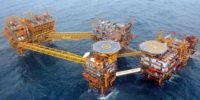HDR has credentialed more than 200 employees and are helping clients prepare their own staffs to test the Envision test, says Wittman.
Skanska "has developed an Envision training matrix that includes employees of every level throughout our heavy civil construction business unit," says a spokesman. The Madison sewerage district aims to have 100% of its engineering staff credentialed by year-end and requires the same of outside consultants.
Stantec notes its launch of an "aggressive and comprehensive strategy" last year to promote Envision internally and to clients, says Janowitz. The firm now has exceeded a goal of 100 credentialed employees and has included Envision elements in "as many proposals as possible to expose clients to this tool and way of thinking," and to show successful use on projects, he adds.
The firm helped push the Grand Bend wastewater treatment upgrade on Lake Huron in Ontario to gain ISI platinum Envision verification this month, the first such designation in Canada and the first for a global sewerage facility.
Flexible Tool
Janowitz says the firm and client municipalities "saw a real opportunity to turn ... negative views of a wastewater treatment facility into something positive—something that would not only not be viewed as a blight on the communities, but something that would be appreciated."
He says use of Envision resulted in design changes that boosted facility resilience and short and long-term climate change risks, saved municipalities more than $7 million and can be expanded in size based on peak inflows and population growth.
The Grand Bend project has already "directly contributed" to the firm's win of an even larger project in Ontario, says Janowitz.
He adds that Stantec also is using Envision on other types of infrastructure projects, such as a port project in Vancouver and community development in Georgia. A transportation project is set for official certification next month.
Envision "is a highly flexible tool and is non-prescriptive in nature unlike some other rating systems that are designed to apply to one type of project," says Janowitz. It encourages project teams to challenge assumptions and the status quo."
Los Angeles County's Public Works Dept. also earned platinum status for its Sun Valley watershed project, a first of its kind, says Youn Sim, sustainability manager. He says the project received 67% of applicable Envision credits, the most any project has received to date under the ISI rating. Platinum designation can be reached at 50%.
Envision proponents say the approach's flexibility and broad applicability limit the credits to any one project, but concede the number can be misunderstood by stakeholders. The department has used Envision to develop more than 60 projects, from water resources to transportation to waste management and is the first public agency to credential 100 staffers, says Sim.
The King County, Wash., wastewater treatment unit is piloting Envision on three major capital projects—a pump station and forcemain upgrade, new combined sewer overflow treatment plant and an interceptor upgrade, says Kathy Loland, project planning and delivery section manager.
She says use of the approach "has woven sustainability into the fabric of the projects themselves," with impacts on agency decision-making in areas such as construction waste recycling, energy and water conservation, stormwater management and community impact. Loland says Envision's scoring of "social justice impacts" related to facility siting needs improvement.
However, the InterAmerican Development Bank has used Envision to rate community impacts on projects it funds in 26 Latin American and Caribbean nations, says Ana Maria Vidaurre-Roche, its principal investment officer.
Projects are scored by the Harvard program, but none have yet been submitted for ISI verification. Even so, she says, use of Envision metrics "can make project teams think differently." Cited projects include a rail line in metropolitan Lima, Peru, that has improved greenhouse gas emissions and an airport in Galapagos, Ecuador, that provides 30% of its own energy needs.
"Envision seems to be a more comprehensive tool than LEED as if looks at climate, environmental, use of resources as well as stakeholder involvement and impact on community, together with governance and innovation," says Vidaurre-Roche.










Post a comment to this article
Report Abusive Comment